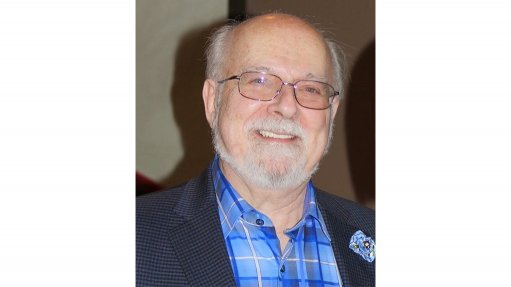
JACK LIFTON Lithium is the “clear incumbent metal of choice” in the race to develop and implement rechargeable batteries for future energy consumption, which means that players within the lithium space must innovate and adapt to meet global demand
Lithium extraction from the Salar del Diablo property – covering 103 450 ha – will require a novel technique, given recent geological changes. The property, in the state of Baja California, in Mexico, is four-million years old.
Lithium separation technologies company One World Lithium (OWL) undertook a four-hole diamond drilling programme in 2021, during which it found that the Salar del Diablo had turned into a closed basin, with lithium-ions swept out of the basin and down river to the Gulf of California downstream.
OWL had analysed 18 samples over a linear distance of 50 km and all of them contained less than five parts per million of lithium.
OWL consultant Tim Brock comments that, although the assay results were “disappointing”, they created a new business aim of developing a transformative lithium extraction technology.
Consequently, in March last year, OWL signed an option agreement with the US Department of Energy’s (DoE’s) National Energy Technology Laboratory (NETL) to commercialise the DoE patent for its patents, titled Selective Lithium Recovery as Lithium Carbonate from Natural Brine.
OWL’s option agreement with the US DoE and the NETL focused on the potential to profitably separate high-purity lithium carbonate from brines. The DoE patent is an advanced direct lithium extraction (DLE) process for natural brines, which could allow for rapid generation of a pure lithium carbonate.
OWL consultant on processing technology, Jack Lifton, citing the National Renewable Energy Laboratory (NREL), notes that “DLE technologies can be broadly grouped into three main categories: absorption using porous materials that allow for lithium bonding, ion exchange and solvent extraction.”
“Legacy lithium extraction processes use large amounts of water – about 1.8-million litres for every ton of lithium produced. The OWL process uses no external freshwater feed,” says Lifton.
Lifton adds that legacy lithium extraction technologies also create the potential for toxic chemicals to seep into the waste stream and process water supply outflow.
He says OWL’s patented DLE method uses a unique multistep high-pressure/temperature application of carbon dioxide (CO2) injection-mixing to directly and selectively precipitate lithium carbonate from brines.
The process requires no solvent, electrodes, membrane or sorbents and only uses CO2, which can be sourced commercially from industrial waste streams or ambient air.
Further, the OWL process significantly reduces capital and operational costs, processing time, energy requirements, and, paradoxically, overall CO2 emissions. The latter is possible because “the process is fully operational at the brine source, eliminating transportation of brine-derived solids to a chemical processing facility to form pure lithium carbonate,” says Lifton.
The DLE process also speaks to the capability of OWL’s technology to vertically integrate the production of battery-grade lithium carbonate directly from brines in one reactor.
Moreover, deployment of this technology would also reduce dependence on foreign lithium sources, comments Lifton.
Lifton says that OWL’s DLE will be a gamechanger as DLE techniques dramatically improve lithium recovery rates, increase lithium concentration in the end-product, and eliminate 99% of impurities.
Market Outlook
The US Inflation Reduction Act offers many incentives to promote clean energy, including the increased use of electric vehicles (EVs), and lithium is a key component in EV batteries.
Brock expects that these incentives will drive up EV adoption, which should, in turn, spur demand for lithium and boost mining activity.
The Canadian government, meanwhile, released its updated Critical Minerals Strategy in December, outlining plans to escalate critical mineral exploration and the development of a domestic supply chain in Canada.
Brock says the strategy outlines an aim to grow a low-carbon economy in Canada while addressing the increasing need to eliminate reliance on international supply of critical minerals. A key focus will be creating opportunities to accelerate mining, exploration and development by removing bureaucratic roadblocks, providing financial incentives and prioritising new infrastructure in remote parts of the country.
Lifton also notes that the US is “squandering” its competitive advantage because it is holding about eight-million tons of lithium in reserve – ranking among the top five countries in the world – but accounts for only about 1% of global supply, which is sourced from a solitary lithium brine mine in Silver Peak, Nevada.
Lifton stresses that lithium is the “clear incumbent metal of choice” in the race to develop and implement rechargeable batteries for future energy consumption, which means that players within the lithium space must innovate and adapt to meet global demand.
“The paradigm shift is accelerating, and as lithium-ion batteries are more widely used in automobiles and power storage devices, the demand is accelerating as well,” he concludes.